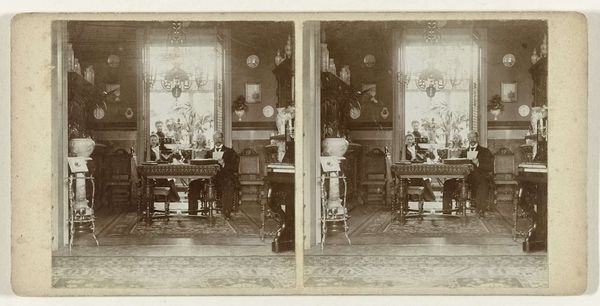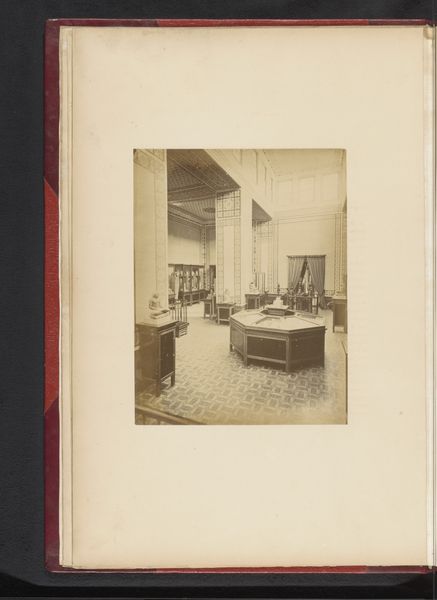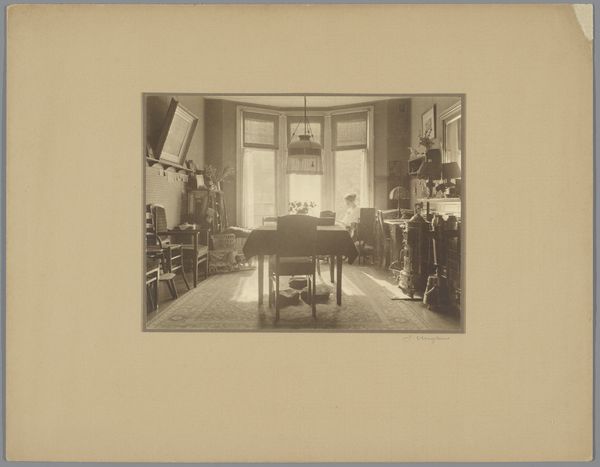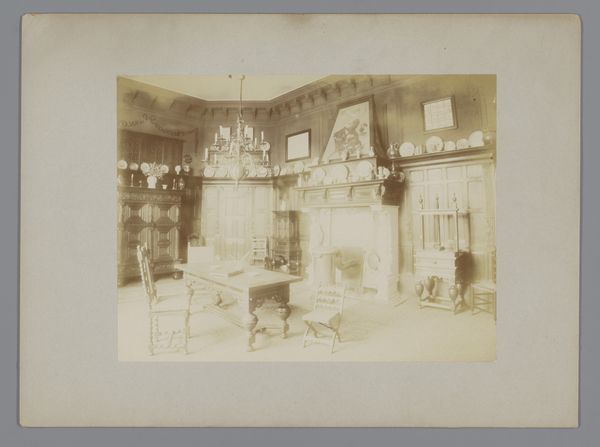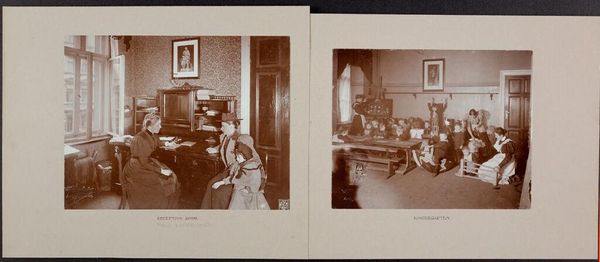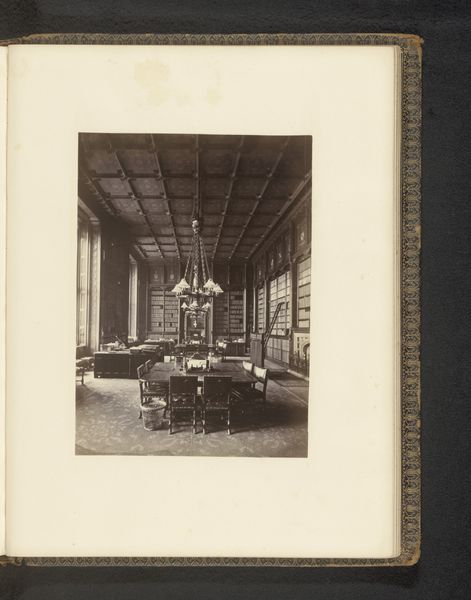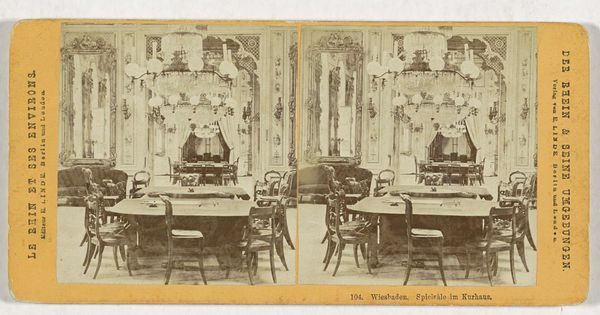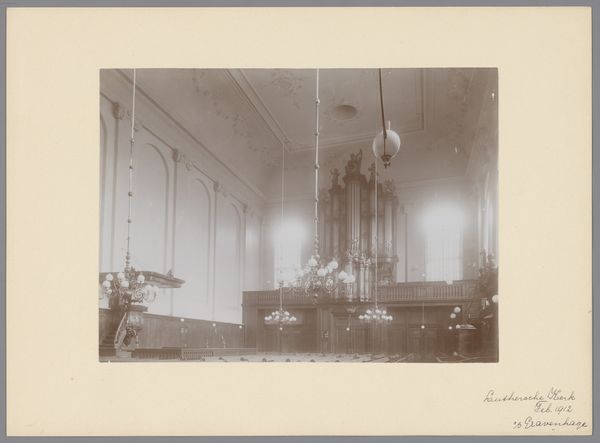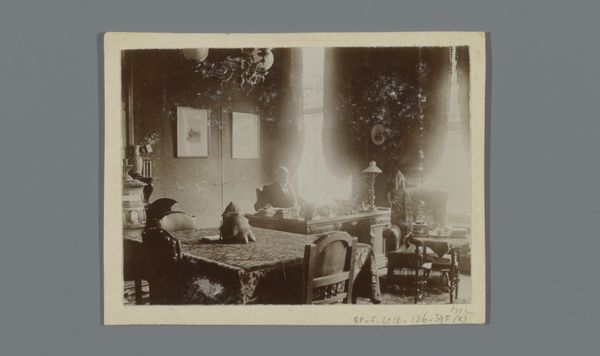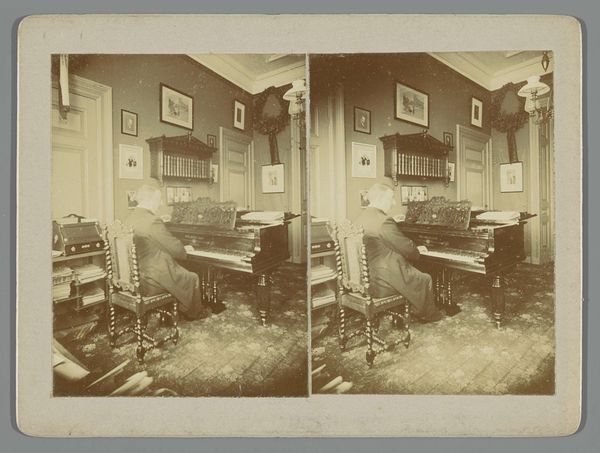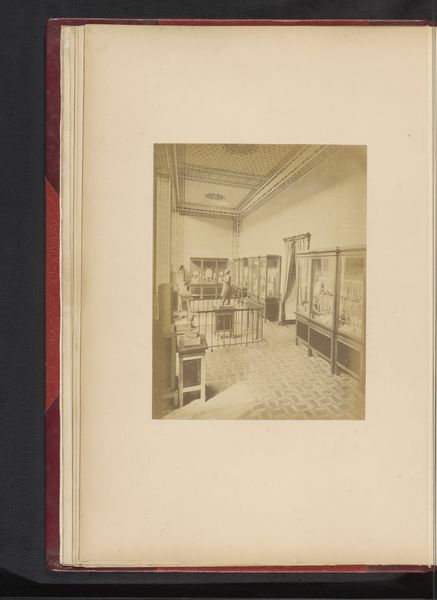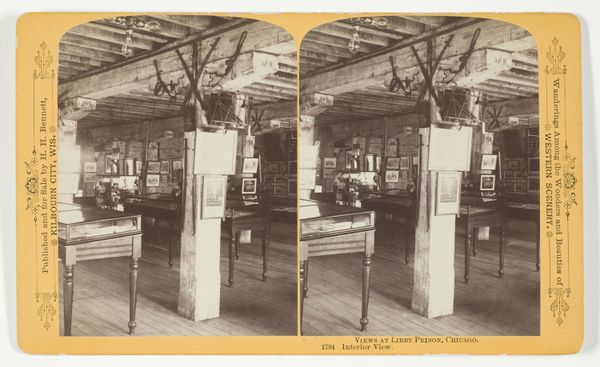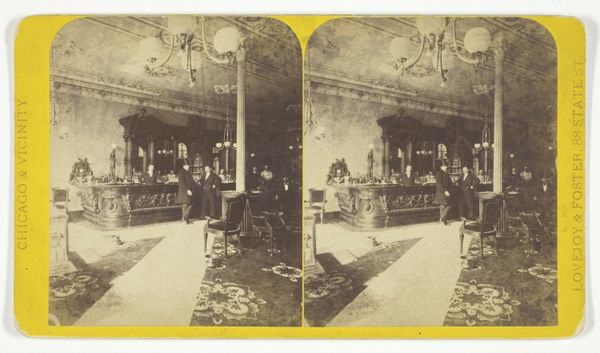
Interieur van het kantoor van oud-president Steyn in Bloemfontein dat later in gebruik werd genomen door Lord Roberts (Frederick Sleigh Roberts) 1901
0:00
0:00
photography, gelatin-silver-print
#
portrait
#
photography
#
coloured pencil
#
gelatin-silver-print
#
genre-painting
#
realism
Dimensions: height 88 mm, width 178 mm
Copyright: Rijks Museum: Open Domain
Editor: This photograph, "Interieur van het kantoor van oud-president Steyn in Bloemfontein dat later in gebruik werd genomen door Lord Roberts," was taken in 1901. It's a gelatin-silver print showing the office of a former president. What strikes me is the quiet stillness, the ordinariness of the space despite its political significance. How do you interpret this work? Curator: This image speaks volumes about power and transition through the lens of a seemingly mundane space. The very act of photographing this office, previously occupied by a political figure of one nation now used by a representative of another, signifies a shift in control. The empty office, staged perhaps, removes the human element and focuses instead on the spoils of war, emphasizing the institutional aspect of conquest. It begs the question: who controlled the means of representation, and whose narrative does this photograph serve? Editor: So, it's not just a picture of an office, but a statement about political dominance? Curator: Precisely. Think about the choice of perspective. The deliberate display of the desk, papers, and bookcase all point to the orderly assumption of power, a "civilized" transfer in contrast to the potential chaos of conflict. The publisher's imprint is prominant and could point to biases present in what might have been portrayed as objective. Who are they trying to sell this image to? Editor: That makes me look at it in a whole new way. I was initially just seeing an empty room. Curator: Exactly! These historical photographs aren't just passive recordings; they're carefully constructed narratives. Now what happens if the papers on the table represent ongoing negotiations, or treaties? Editor: This makes you think about how everyday places transform into symbols during politically significant events, or how political change occurs through control of such commonplace buildings. Thank you. Curator: My pleasure. And next time, consider the political framework of objects around you when engaging with them.
Comments
No comments
Be the first to comment and join the conversation on the ultimate creative platform.
